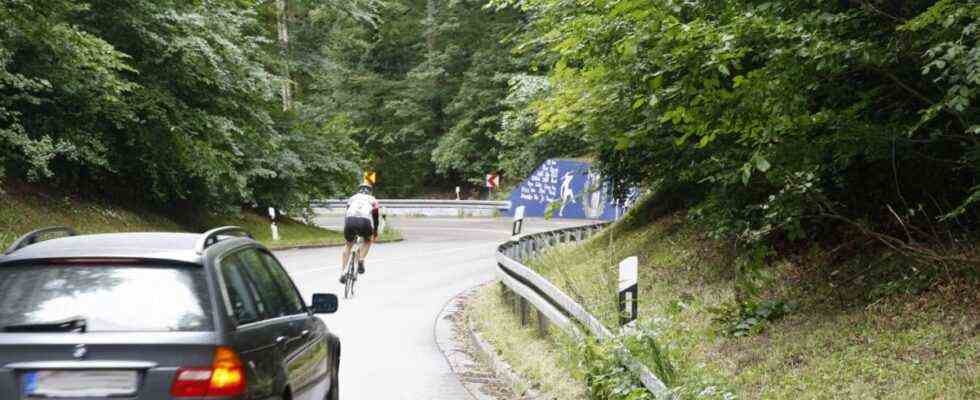As attractive and demanding as the elevation profile of the Schäftlarner Berg may be for cyclists, it is also dangerous for them, as has been proven by several serious accidents in recent years. Now the CSU local chairmen of Schäftlarn, Straßlach-Dingharting and Egling (Bad Tölz-Wolfratshausen district) have sent a joint open letter to the Bavarian Transport Minister Kerstin Schreyer with the request to defuse the situation by building cycle paths along the road.
“There is verifiably hardly any places in the Munich district that are more dangerous for cyclists than the Klosterberg / Schäftlarner Berg,” write Florian Sperl from Egling, Christian Fürst from Schäftlarn and Florian Zweckinger from Straßlach-Dingharting to their party friend Schreyer from Unterhaching. The General German Bicycle Club (ADAFC) hears this advance with goodwill, but also sees further possibilities for reducing the risk through speed restrictions.
The road that leads from Hohenschäftlarn to Schäftlarn monastery is winding and steep, and falls often with serious consequences on the descent. A parallel cycle path, as requested by three CSU local association chairmen, could defuse this section of the route.
(Photo: Hartmut Pöstges)
The three local politicians explicitly hope for a sustainable improvement in the traffic situation by building cycle paths between Hohenschäftlarn and Beigarten next to State Road 2071 and along State Road 2971 in the direction of Deining to the intersection with State Road 2072. There is also a danger that there is imminent danger here Accident analysis for cycling confirmed, which was commissioned by the Munich District Office. The result was that there were two accident sites in the Munich district; one in Aschheim and one between Hohenschäftlarn and Schäftlarn monastery, the three initiators let the minister know. In the years between 2016 and 2018 alone, there were three accidents involving cyclists, all of which resulted in seriously injured victims. The district office’s bicycle traffic and signage concept for the district of Munich also recommend – for various reasons – the establishment of a “main route” between Hohenschäftlarn and Beigarten in the “Umlegungsradnetz”.
In their open letter, the three CSU local chairmen also refer to the supra-regional importance of the state roads as connecting roads, especially since they are one of the few ways to cross the Isar south of Munich. “As neighbors, we observe objectively that, especially in the summer months, countless cyclists appreciate the challenging elevation profile of the Klosterberg / Schäftlarner Berg.”
This means that many motor vehicles also use the two state roads, so that dangerous situations and accidents occur again and again, especially when overtaking, the open letter said. These observations would also be confirmed by the members of the volunteer fire brigades in the three localities. Every year emergency services have to go on numerous missions on the downhill section above the monastery.
According to Hartmut Schüler from the ADFC, the bridge over the Isar Canal, to which a sidewalk was added only six years ago, urgently needs to be widened.
(Photo: Hartmut Pöstges)
Cyclists can also read on the ADFC Munich website that the winding and sloping roads are dangerous. State road 2071 is heavily frequented by motor vehicles due to short-cut and leisure traffic. There are no safe, direct bike paths from Beigarten to Straßlach and from Straßlach over the Isar or to other parts of the community. “All in all, the idea is very good,” says Hartmut Schüler, district representative of the ADFC Munich, on the initiative of the CSU chairmen. In his opinion, a cycle path would make sense, especially on the driveway to Hohenschäftlarn. Many motorcyclists are also out and about here and sometimes drive up and down the serpentines to practice. “In other places, Tempo 30 would also lead to success, for example on the old Olympic race track between state roads 2071 and 2072, the It is still popular today, especially by racing cyclists. The road is heavily frequented, but very narrow. Even the Munich district office has been told that it is more of a local connecting road than a state road, says Hartmut Schüler. In his opinion, 30 km / h would also be on the avenue in Beigarten, where you are still allowed to drive 100 km / h today. “This is the section that is most frequented by cyclists,” the ADFC official explains.

